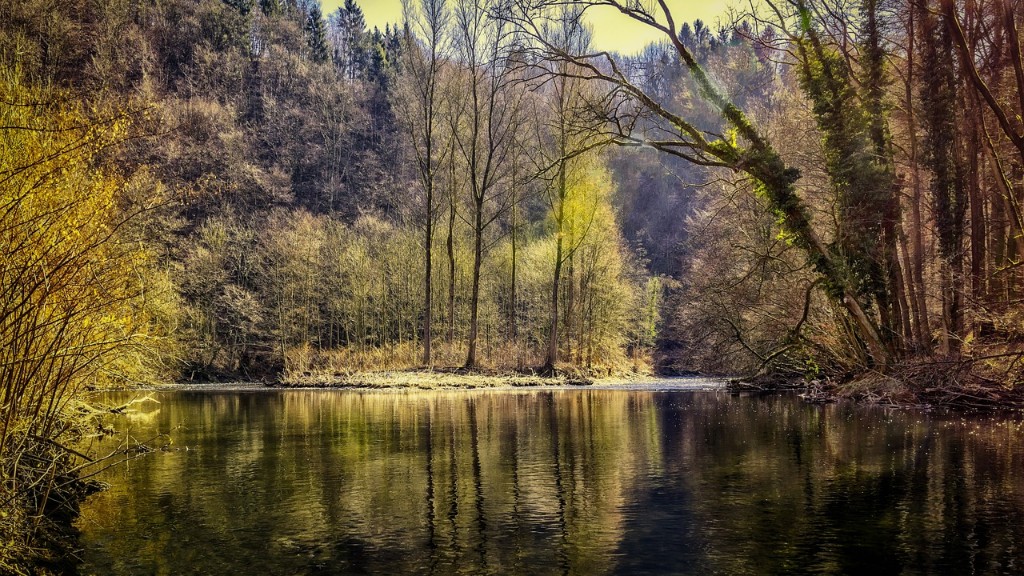Exploring the Mississippi River
The Mississippi is one of the most iconic rivers in the United States. For centuries, the river has been at the center of American life and culture. It is a source of pride and a symbol of America’s history, and the river remains a source of power, recreation, and economic development. But where does the Mississippi River go? Can modern technologies and measurements provide a glimpse into its future?
Geological History and Current Route
The Mississippi River is the second longest river in North America, running more than 2,350 miles from its source near Lake Itasca in Minnesota through 10 states—Minnesota, Wisconsin, Iowa, Illinois, Missouri, Kentucky, Tennessee, Arkansas, Mississippi, and Louisiana—to the Gulf of Mexico. It also serves as part of the border between Minnesota and Wisconsin. Along the way, the river passes through a number of major cities, including St. Louis and Memphis, and many tributaries join the river, including the Arkansas and Missouri rivers.
The river’s current path has changed dramatically over the years. According to geologists and historians, the Mississippi’s original path was more than 5,000 years ago, when its course began to find a direct outlet to the Gulf of Mexico. Since then, the river has moved several times, meandering and changing its course as it makes its way south.
Today, the Mississippi is under constant change. Its route is constantly shifting and evolving as sediment is deposited and washed away, and the riverbed is continually eroding. As the river moves, so too do the local communities that rely on it for transportation and commerce. Some towns have been entirely flooded or swallowed up by the river, while towns nearby remain untouched.
Potential Impacts of Climate Change on the River’s Future
With climate change, the future of the Mississippi River is uncertain. The Earth’s climate is changing rapidly, and with it, the river will also experience an unprecedented level of shifts in its environment. According to research from the US Geological Survey, the rising sea levels due to melting glaciers, higher temperatures, and more severe storms mean that the Mississippi is likely to experience even greater levels of flooding and erosion in the coming years.
The effects of climate change could extend far beyond the river’s banks, and could even have an effect on the health of the nearby communities. As the temperature rises, floods become more frequent, and water quality decreases, the river’s ecosystems and the resources obtained from them are at risk. Scientists are also studying how changes in the river’s flow could affect its tributaries, as well as other local bodies of water.
Measurement Technologies Used to Track the River’s Ecosystem
In order to better understand and predict changes to the Mississippi River, researchers have developed a number of innovative tools for collecting data about the river’s health. Using a combination of satellites, buoys, and sensors, researchers can measure the water level, temperature, salinity, and other factors that influence the river’s ecosystem.
One particular application of this technology is the use of remote sensing to monitor and understand the river’s relationship to its tributaries. This includes tracking the water’s flow and levels, as well as how nutrients move between different areas of the river. This data can then be used to understand how changes in the river can affect the tributaries and how they, in turn, affect the river.
These measurements are also used to understand the impact of human activity on the river’s ecological health. Through the use of this data, researchers can look at how contaminants are entering the river system and how they’re affecting wildlife and plants along the waterway.
Protecting the River and its Inhabitants
As researchers continue to use the data collected to understand and protect the river, organizations have rallied to create initiatives that promote the health of the Mississippi River and all those who rely on it, both human and wildlife. From creating conservation efforts to restore and protect wetlands and wildlife habitats to encouraging local businesses to practice sustainability and responsible development, these organizations are dedicated to protecting the river for future generations.
The future of the Mississippi River is dependent upon the efforts of all who inhabit its banks and its tributaries. With the aid of modern technologies and research, it is possible to understand the complex systems at play in the river—and with that understanding, the possibility of sustaining this important river for future generations.
Environmental Organizations Working to Conserve the Mississippi
A number of organizations are working towards preserving the Mississippi River’s natural environment. The Mississippi River Network, for instance, is a coalition of more than 65 organizations devoted to improving water quality, restoring wetlands, protecting native aquatic species, and addressing failed water infrastructure.
The Mississippi River Fund, run by the National Fish and Wildlife Foundation, works to raise public awareness of the river’s importance and to promote sustainable economic development along its banks. The organization is also working to protect vulnerable areas of the river from pollutants, farming runoff, and other sources of contamination.
The Mississippi River Parkway Commission is a coalition of state and local government agencies, organizations, and businesses dedicated to ensuring that the Mississippi remains a safe, vibrant resource for recreation and transportation along its length. The commission works to maintain the river’s natural beauty and vitality while preserving its cultural and historic sites.
These organizations are just a few of the many dedicated to the care and protection of the Mississippi River. While the future of the river is uncertain, these organizations and others like them provide an important foundation for restoring the river and protecting its inhabitants.
Economic Value of the Mississippi
The Mississippi River also has significant economic value for the many communities along its length. In addition to providing water for human consumption and agriculture, the river has been an important source of shipping and transportation for centuries. The port of New Orleans, which serves as the terminus for the Mississippi, is the largest port in the United States by tonnage and plays an important role in the global economy.
The river also supports numerous industries along its length, including tourism, recreation, real estate, and more. The Mississippi is also home to a vibrant fishing industry, with species such as bass, catfish, and sturgeon being harvested in numbers that support both commercial and recreational fisheries. The river’s connection to the great agricultural plains of the Midwest and its position at the intersection of the North and South make it an essential asset for trade in the region.
Protecting the river and its ecosystem is not only important for its natural and scientific value, but for its economic value, as well. The Mississippi River and its tributaries are integral to the health and vitality of the region’s economy, and efforts to protect and preserve the waterway are essential for its long-term success.
Conclusion
The Mississippi River is an important resource for a number of communities and industries, and advances in technology have provided us with new insights and data on the river and its ecosystems. By understanding the river and its inhabitants, we can work towards protecting it for future generations and ensuring it remains a source of pride and a symbol of America’s rich history.




